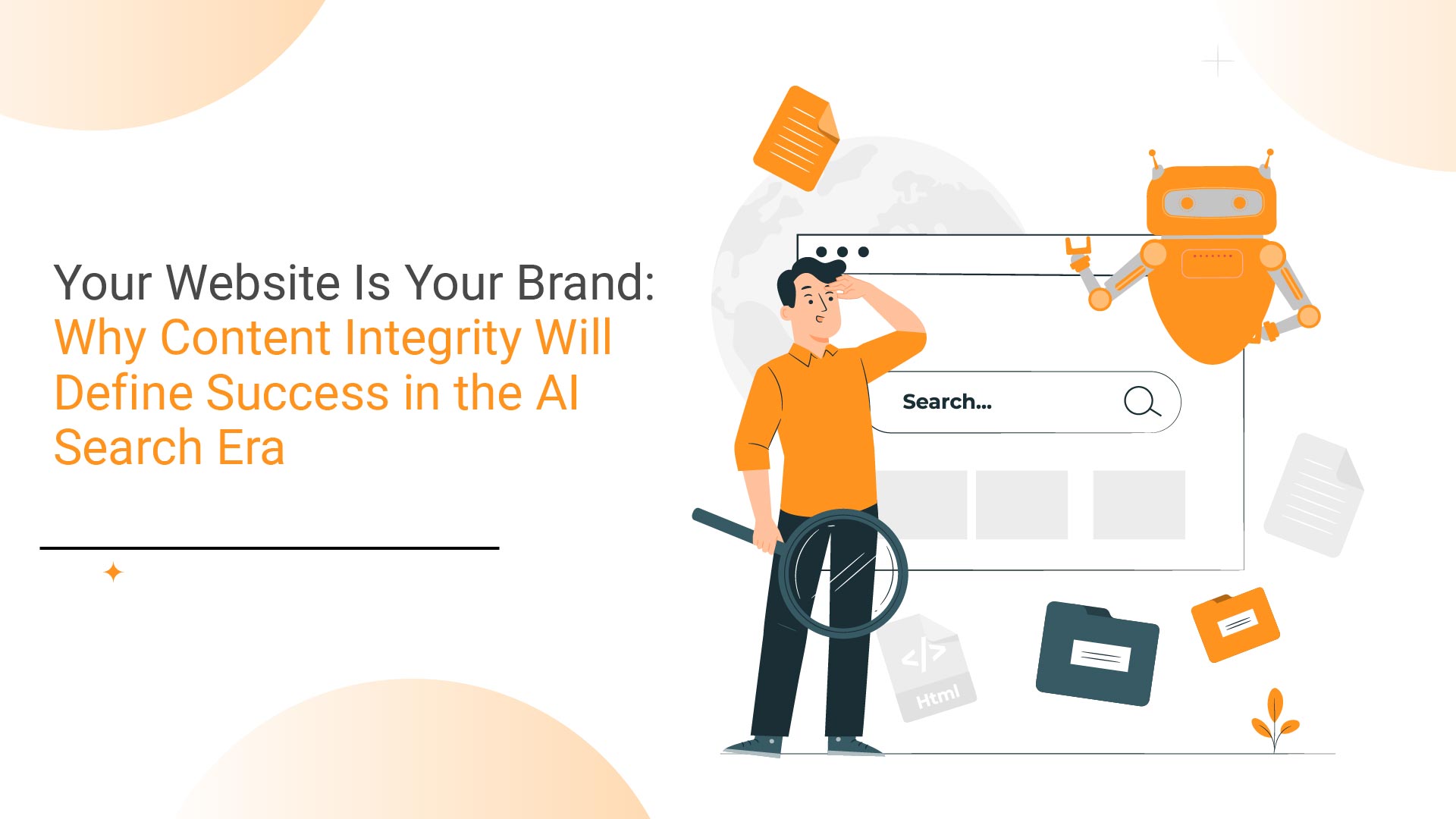

content syndication marketing
Your Website Is Your Brand: Why Content Integrity Will Define Success in the AI Search Era
Your Website Is Your Brand: Why Content Integrity Will Define Success in the AI Search Era
Search, for most of its history, has been a journey. People typed in queries, evaluated a list of blue links, and decided which destination to trust. For brands, this meant vying for visibility on the results page and persuading clicks once the user arrived. That era is ending.
A quiet but radical shift is underway. Artificial intelligence, now layered into the structure of search engines and web browsers alike, is transforming how information is surfaced and how decisions are made. Increasingly, consumers no longer land on websites at all. They receive answers directly—synthesized, summarized, and often acted upon—without needing to click a single link.
The implications for brands are profound. The battleground is no longer just visibility, but interpretability. What is written on your website, including how clear, credible, and complete it is, no longer influences a visitor after they arrive. It trains the machines before they ever send someone your way. Your content is your brand’s DNA, and it is being read not by humans, but by algorithms drawing conclusions on their behalf.
From Gateway to Ground Truth: The Website’s New Role
The role of a website has shifted from destination to dataset. Google’s Search Generative Experience (SGE), Microsoft’s Copilot, and generative AI interfaces like ChatGPT are ingesting web content at scale to formulate responses. These systems do not merely index pages. They analyze tone, assess consistency, and weigh relevance before distilling an answer.
The result is that brands are increasingly being interpreted rather than visited. If your site contains vague marketing fluff, the AI will ignore it. If it contains outdated or contradictory claims, it may misinterpret you. And if it contains little substance at all, the model may substitute third-party sources or your competitors’ more articulate perspectives.
Search engine optimization, once a technical function, is now a matter of editorial clarity. Content that is structured, specific, and useful is more likely to be surfaced and cited. In short, the machines are learning, and they are choosing who speaks for your brand.
Authenticity Isn’t Just a Virtue—It’s a Ranking Signal
What resonates with AI is, not coincidentally, what resonates with people. Authenticity, long a buzzword in branding circles, now has computational weight. Large language models favor content that reflects authority, trust, and real experience. That means long-form explainers, nuanced product comparisons, and clear answers to common questions carry more value than branded slogans or generic taglines.
The most effective content now mirrors the credibility of journalism and the relatability of user reviews. First-person perspectives, transparent disclosures, and story-driven narratives tend to perform better in both human and machine evaluation. In this sense, content strategy is becoming a function of epistemology—how knowledge is built, sourced, and communicated in ways that can be verified.
This creates an opportunity for brands to stand apart. High-quality content is no longer just an inbound tactic. It is a form of reputational infrastructure. By investing in material that explains your products, reflects your values, and anticipates your customers’ questions, you are not just attracting traffic. You are training the models that will summarize you.
The Rise of the AI-First Consumer
Consumers are changing, too. They trust AI to summarize their choices, and they expect answers that feel informed, not just promoted. Instead of browsing a dozen sites, many now rely on a single AI-generated response.
This puts pressure on brands to ensure that the “source material” AI uses—your website—speaks to real concerns and expresses identity, not just features. If your content lacks substance, you risk becoming invisible or, worse, misrepresented.
The Risk of Silence: When Brands Don’t Control the Narrative
AI doesn’t ask permission. If your content doesn’t clarify who you are and what you offer, the models will infer it from somewhere else. That “somewhere else” could be outdated forums, biased reviews, or competitors with more structured content.
Without proactive storytelling, a brand can lose its voice in search without even knowing it.
This should prompt a reassessment of priorities. While paid advertising can still influence consumer decisions, its role in the AI-mediated funnel is diminished. The primary influence now lies in owned content, particularly the kind hosted on your own domain, where control is greatest and signals are cleanest.
Silence, in this context, is no longer neutral. It is a forfeiture.
Building for AI and for People
This is not a trend to ride. Instead, it’s a shift to reckon with. AI search will only grow in influence, and the brands that succeed will be the ones whose content is:
- Accurate, so models can rely on it
- Authentic, so consumers trust it
- Structured, so algorithms can parse it
The brands that treat content as a strategic asset—not just a marketing deliverable—will lead. Because in the era of AI search, the words on your website may be the only ones that speak for you.

Joseph




